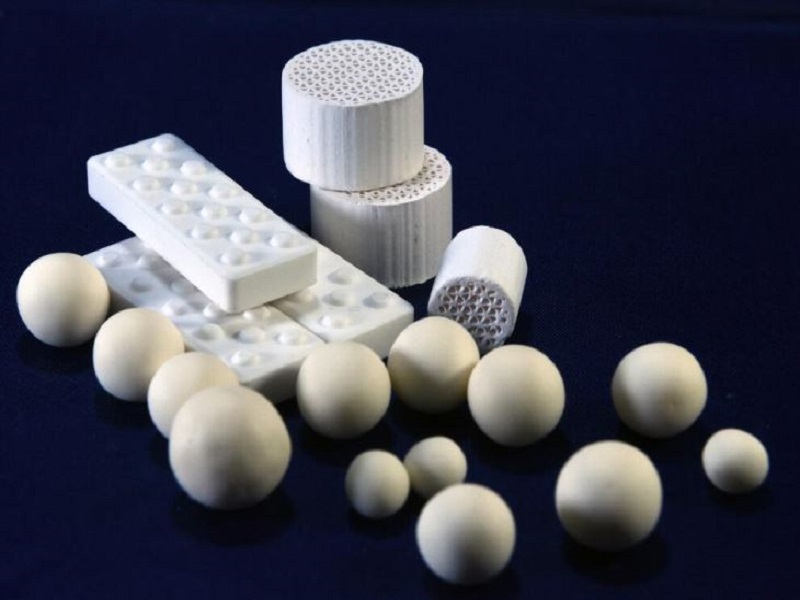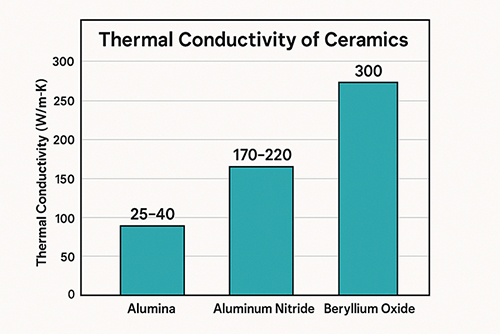Typical Ceramics and Respective Applications
Overview
Ceramics are widely used in various industries due to their unique properties, including high-temperature resistance, electrical insulation, and wear resistance. In this article, we will discuss some typical ceramics, their applications, and their characteristics.

Alumina (Al2O3)
Alumina is one of the most commonly used ceramic materials due to its excellent mechanical properties. It is used in many applications such as containing molten metal, as an insulator in spark plugs, and in unique applications such as dental and medical use.
Aluminum Nitride (AlN)
Aluminum nitride has high thermal conductivity and good electrical insulation properties, making it ideal in electronic applications such as integrated circuits and electrical circuits operating at high frequencies.
Diamond (C)
Diamond is the hardest material known to man. It is used as industrial abrasives, cutting tools, and abrasion-resistant coatings. It is also a popular choice for jewelry.
Lead Zirconium Titanate (PZT)
PZT is the most widely used piezoelectric material used in gas igniters, ultrasound imaging, and underwater detectors.
Silica (SiO2)
Silica is the most widely used ceramic material in many engineering ceramics. It is used in thermal insulation, abrasives, laboratory glassware, and communications media, like optical fibers.
Silicon Carbide (SiC)
Silicon carbide is commonly known for its excellent properties in high-temperature applications. It can be found as coatings on other materials for protection from extreme temperatures. SiC is also used as reinforcement in many metallic and ceramic-based composites and as an abrasive material.
Titanium Oxide (TiO2)
Titanium oxide is mostly used as a pigment in paints and forms part of certain glass ceramics. It is also used to make other ceramics like BaTiO3.
Titanium Boride (TiB2)
Titanium boride is known for its excellent toughness properties. It is used in armor production and is an excellent conductor of electricity and heat.
Uranium Oxide (UO2)
Uranium oxide is mainly used as nuclear reactor fuel. Its crystal structure can accommodate the products of the fission process, leading to exceptional dimensional stability.
Yttrium Aluminum Garnet (YAG, Y3Al5O12)
YAG has a primary application in lasers, like Nd-YAG lasers.
Zirconia (ZrO2)
Zirconia is used to produce many other ceramic materials. It is used in oxygen gas sensors, as an additive in many electronic ceramics, and even in jewelry.
Advanced Ceramic Materials (ACM) supplies high-quality ceramics and related products to meet our customers' R&D and production needs. Please visit https://www.preciseceramic.com/ for more information.
{{item.content}}
LEVE A REPLY
{{item.children[0].content}}
{{item.content}}
LEAVE A REPLY
SUBSCRIBE OUR NEWSLETTER
- Boron Nitride in Cosmetics: Enhancing Performance and Sensory Appeal
- Maximize MOCVD Yield and Purity with Hexagonal Boron Nitride Setters
- What Are the Advantages and Uses of Boron Nitride Ceramic Sheet?
- The Compression Annealing Advantage for Pyrolytic Boron Nitride
- Beyond Insulation: The Surprising Spectrum of Ceramic Thermal Conductivity











